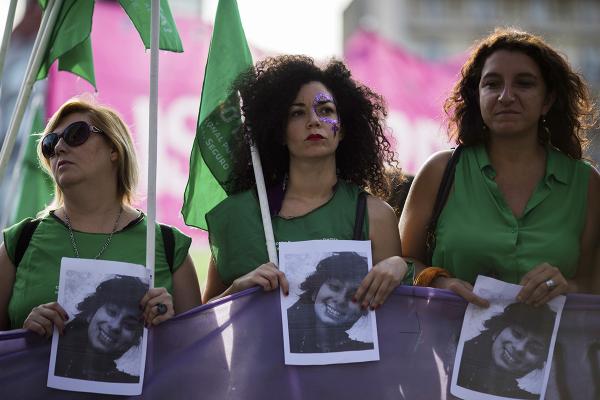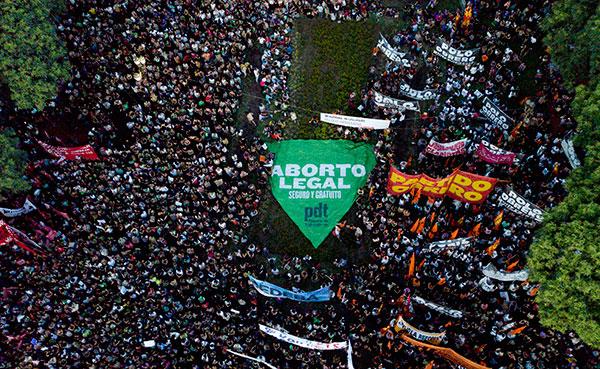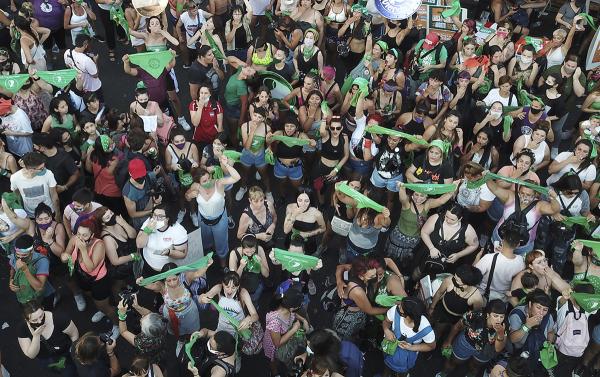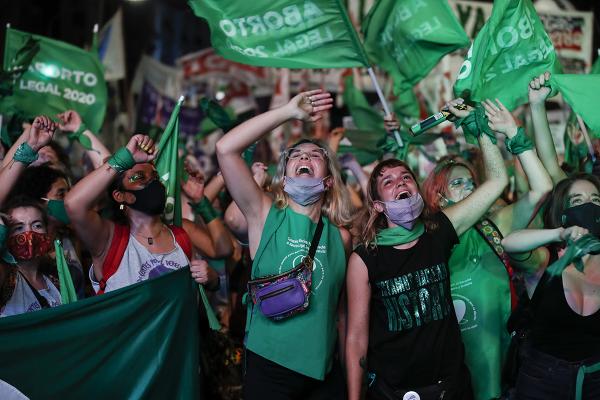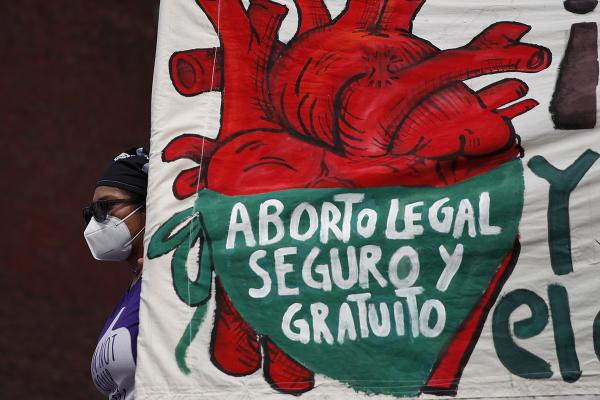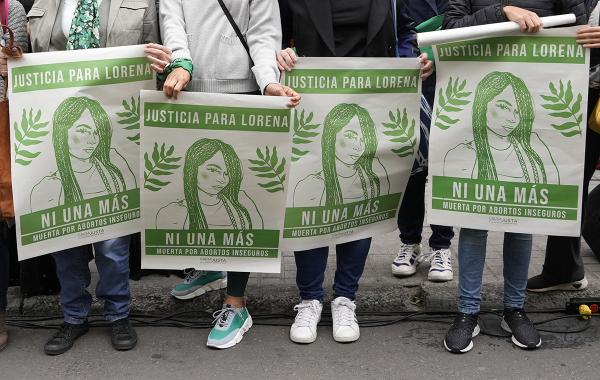Just five years ago the situation confronting women in Latin America was dark indeed. Over 300 million women lived under the terroristic shadow of patriarchal authority that pervaded every aspect of their lives, and that was held in place by powers ranging from the Catholic Church to the rising evangelical movement, and from outright fascist governments.
But starting around 2015, and concentrated in Argentina, something new began to transform the scene: the fury of women against all of this began to be unleashed.
_______
It began with the struggle in several countries against femicide—the murder of females by husbands, boyfriends, family, acquaintances—which is epidemic around the world. On June 3, 2015, protests in Argentina began after 14-year-old Chiara Páez was found buried underneath her boyfriend’s house after being beaten to death. Chiara was a few months pregnant. A female journalist tweeted: “Aren’t we going to raise our voices? THEY ARE KILLING US.” The hashtag #NiUnaMenos (“not one more”) went viral and became the basis for repeated protests of tens and at times hundreds of thousands at congressional square in the Argentine capital of Buenos Aires.

In Cancún, the police opened fire on the protest of about 3,000 people on November 9, 2020 against the femicide of Bianca Alejandrina Lorenzana Alvarado, known as Alexis.
In 2016, Lucía Pérez, a schoolgirl, was drugged, raped and tortured in the coastal city of Mar del Plata. A day of mass strikes, walkouts and other protests involving hundreds of thousands rocked the whole country. An organizer declared “We are saying ‘enough!’ We won’t go back to being submissive and we won’t tolerate any more of the misogyny or violence that all us women have to deal with…. This violence is trying to teach us a lesson, it wants to put us back in a traditional role into which we don’t fit any more. It’s not a specific blow by a specific man against one woman in particular, it’s a message to all women to return to our stereotypical roles.”
It is out of this unleashed fury at the subjugation of women that the fight against abortion bans arose.
By 2018 pro-abortion demonstrations of tens and hundreds of thousands swept Argentina.
This Chilean Anti-Rape Song Is Now a Viral Feminist Anthem
Prominent artists and intellectuals also joined the fight, including Canadian author Margaret Atwood and Lucrecia Martel, Argentina’s most prominent film director. Atwood wrote in an op-ed, “Women who cannot make their own decisions about whether or not to have babies are enslaved. Enforce childbirth if you wish, Argentina, but at least call that enforcing by what it is. It is slavery.”
The green bandana started with the NiUnaMenos movement. Wearing the green naturally spread to the abortion rights movement. Declaring that women were full human beings, on August 8, 2018, one million people demonstrated for abortion rights.
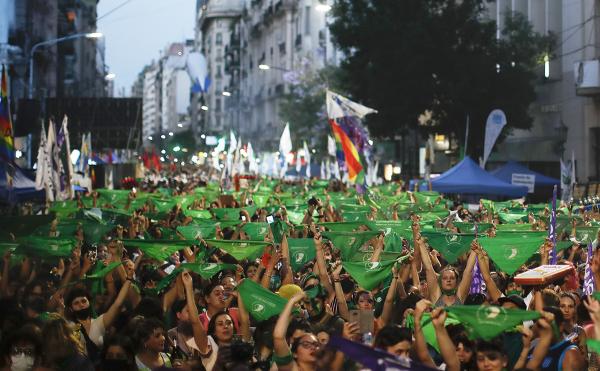
Abortion-rights activists rally outside Congress with green handkerchiefs associated with the movement to decriminalize abortion, as lawmakers debate a bill on its legalization, in Buenos Aires, Argentina, Thursday, Dec. 10, 2020. Photo: AP
It was not only in Argentina that women were rising up. In some countries there were just beginning protests, in others, like Mexico and Colombia, powerful movements. But increasingly the green bandana became THE symbol of relentless, determined, and mass struggle against the oppression of women.
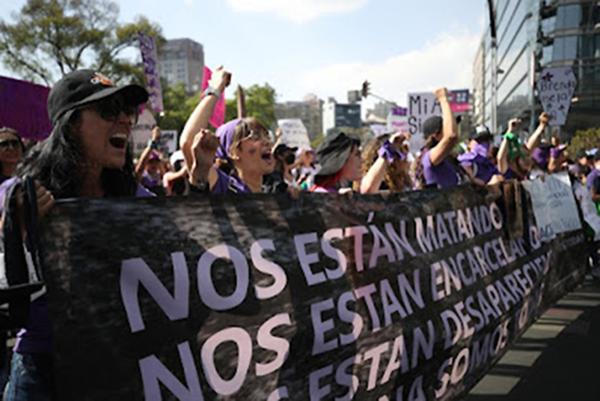
In Mexico, women took to the streets in many cities to protest attacks on abortion rights. Photo: Aurora Roja blog/Yazmín Ortega Cortés, La Jornada
On September 29, 2019, protests marking “International Safe Abortion Day” erupted powerfully in Mexico City and in the Mexican states of Aguascalientes, Jalisco, Oaxaca and Veracruz, holding green banners and spewing green smoke in the air.
In El Salvador, protests focused on a woman who had been sentenced to 30 years in prison for having a stillborn baby. Exonerated in a second trial, the government was preparing a third attempt to imprison her.
On International Women’s Day, March 8, 2020, huge protests drew hundreds of thousands into the streets of Latin America’s biggest cities. In Santiago, Chile, a 21-year-old woman wearing a green bandana told the media, "We are a generation of women that has woken up. We are not afraid to speak out and struggle." A massive police presence often clashed with the protesters there. Meanwhile, in Mexico City, 80,000 people, from children to elders in wheelchairs, filled the street outside the main cathedral where they clashed with male anti-abortion protesters, some of whom made Nazi salutes. A young woman who owns a jewelry shop explained why she had joined this, her first protest: "The situation has gotten out of control... we have to march for those who no longer can."

Bogota, Colombia, February 21, 2021: Exuberant celebrations after court rules to decriminalize most abortions. Photo: AP
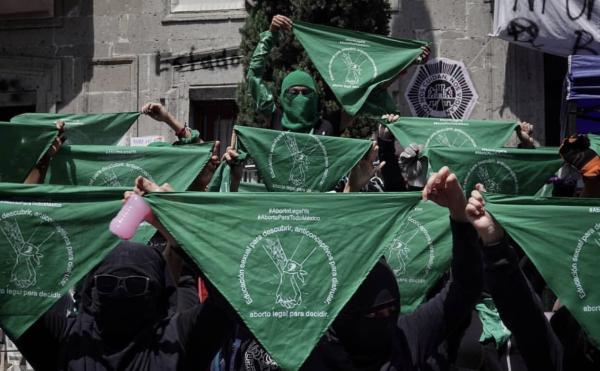
Mexican women fight for abortion rights, September 2020.
All of this reverberated back on Argentina. The masses of women began to see their power in international terms, and the ruling class began to see the potential for disorder that way too.
Then, in the pre-dawn hours of December 30, 2020, a stunning development: As tens of thousands held vigil outside, the Argentine Senate voted by a substantial margin to decriminalize abortion--the first time this had happened in a major Latin American country.
Soon other dominos began to fall. In large and conservative-ruled Colombia, a court ruled on February 21, 2021 to decriminalize most abortion—thousands of women had been protesting in front of the court weekly leading up to the decision. And in September of 2021, a Mexican court delivered a similar ruling. Chile also appears to be on the path of decriminalization.
These few years of intense and growing mass struggle have made a big crack in the patriarchal control of women's lives and bodies. In 2015, 3 percent of Latin American women lived in countries where abortion was largely legal; today the figure is 37 percent. Although the struggle is ongoing--both to expand on recent victories and to beat back attacks being mounted by reactionary anti-woman forces--the Green Wave has achieved a LOT, and sets a powerful and inspiring example for women, and all people struggling against barbaric oppression, around the world.
